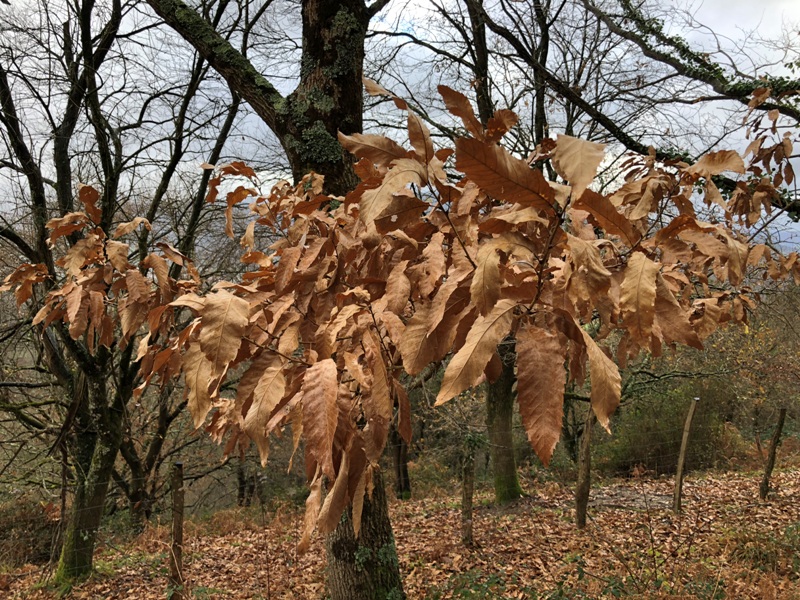

Is it all that has a name, but the other way around? Does it have a name for everything it is? I don't know if we have words in Basque to call that. I mean, how are those trees called that, instead of coming in the fall, drying and releasing the leaves, cling stubbornly to it? Throughout the winter, nymphs were usually opened to the next sweat and new leaves were formed.
To refer to this fact, the languages of our environment are based on the Latin “marcere” (marcescência, marcescenza, marcescence, marcescence…).
In addition to the leaves, there are plants that support other parts, such as brews (Erica sp.) the wilted flowers are maintained or the hydrangea macrophylla hold the flowers brackets. The most well-known are, however, the trees that cling to the leaves. There are many Quercus genera of the robles, such as the beech (Fagus sylvatica), the charms (Carpinus betulus), the chestnut (Castanea sativa), etc. All of them from the Phagal Order.
The reason for this action is not clear. In trees, it happens when most of the time they are young. As you approach maturity, this trend is lost, but it can continue in a few branches.
Many objectives have been mentioned. According to some, in the autumn winters, the plant, grasped to the leaves, melts the eyes or the nitics and the roots that will be renewed next year. Others claim that the contribution of fertilizers to the soil of their shade by grasping some leaves will allow them to better nourish their roots over time. There are those who say that when the leaves are on top, they endure more with the sun and that when they leave to the earth they will fall asleep more easily and turn into food. There are also those who say that these leaves collect more snow and therefore gradually lead more water to their roots.
Also many palm trees keep their leaves dry long. Apparently, this dry foliage sticks the sands, the waste, etc., that the wind uses, taking them to the bottom of the palm tree as fertilizer. In addition to this work, many plants in the mountains of the tropics use the underlying dry leaves to balance the stress of the water; for example, Espeletia schultzii and Espeletia timotensis of the Andes. Just like plants, let's see if we also name this physiological fact in Basque. Proposals are accepted.
